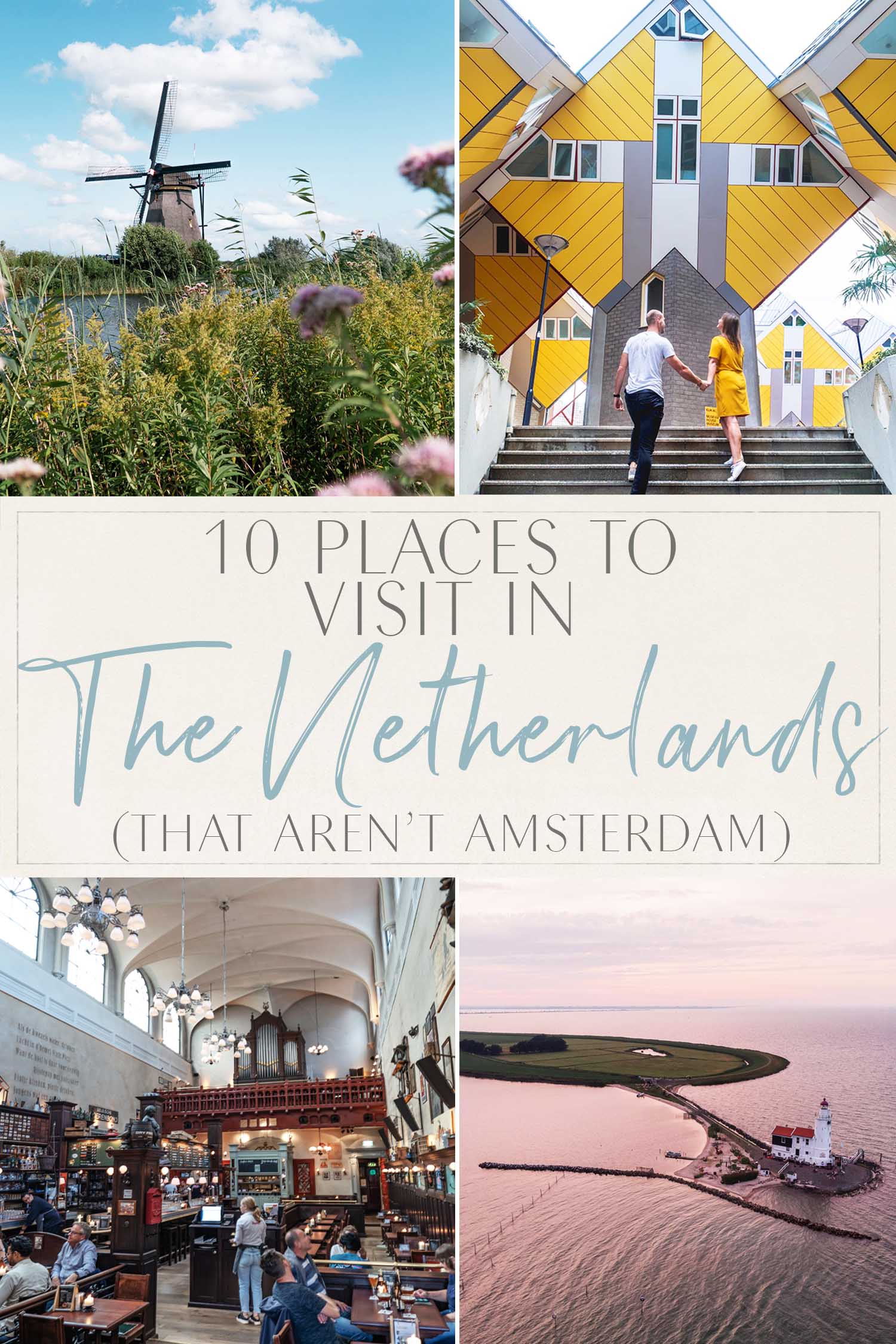
Tom & Zi, the couple behind Craving Adventure, are sharing their insider’s guide to The Netherlands!
When most people think of The Netherlands, the first thing that comes to mind is Amsterdam. Amsterdam is an incredibly fun city, and it is definitely worth it to spend a couple of days ticking things off your Amsterdam bucket list with its iconic canals, many museums, and its rich culture and history.
But Amsterdam is only a small part of the Netherlands, and if you have a few more days to spend, there are many more great places to see in the country other than the windmills at the popular and very touristic Zaanse Schans or the tulip fields.
Curious to find out what else is hidden in the flattest country in Europe? Here are some of the best places to see and visit in The Netherlands that aren’t Amsterdam!
![]()
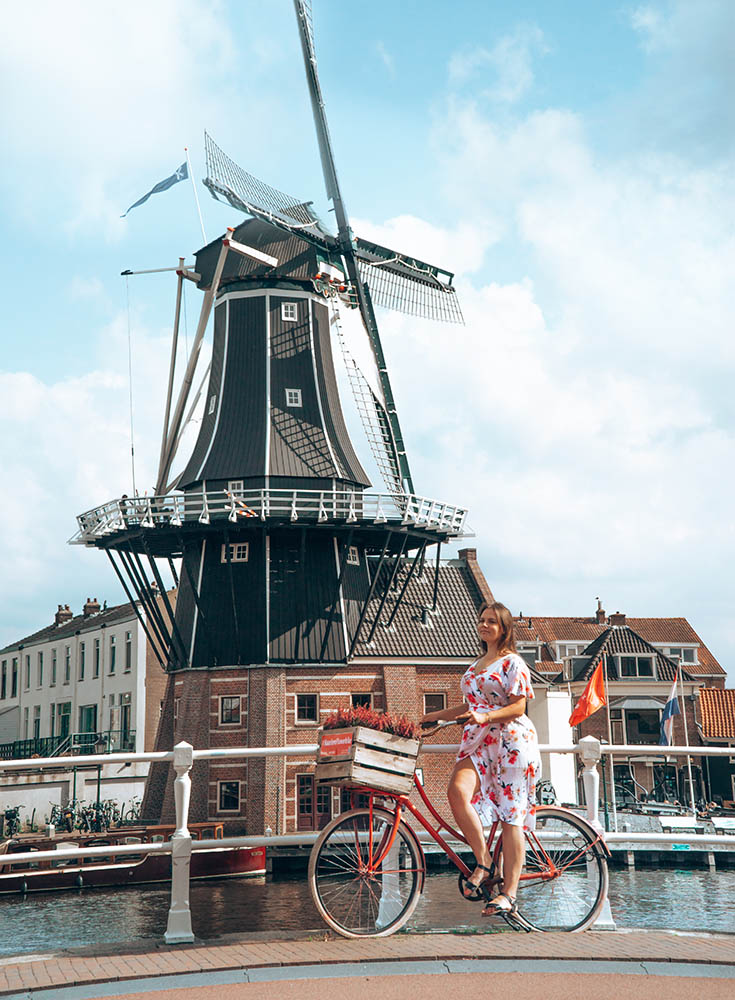
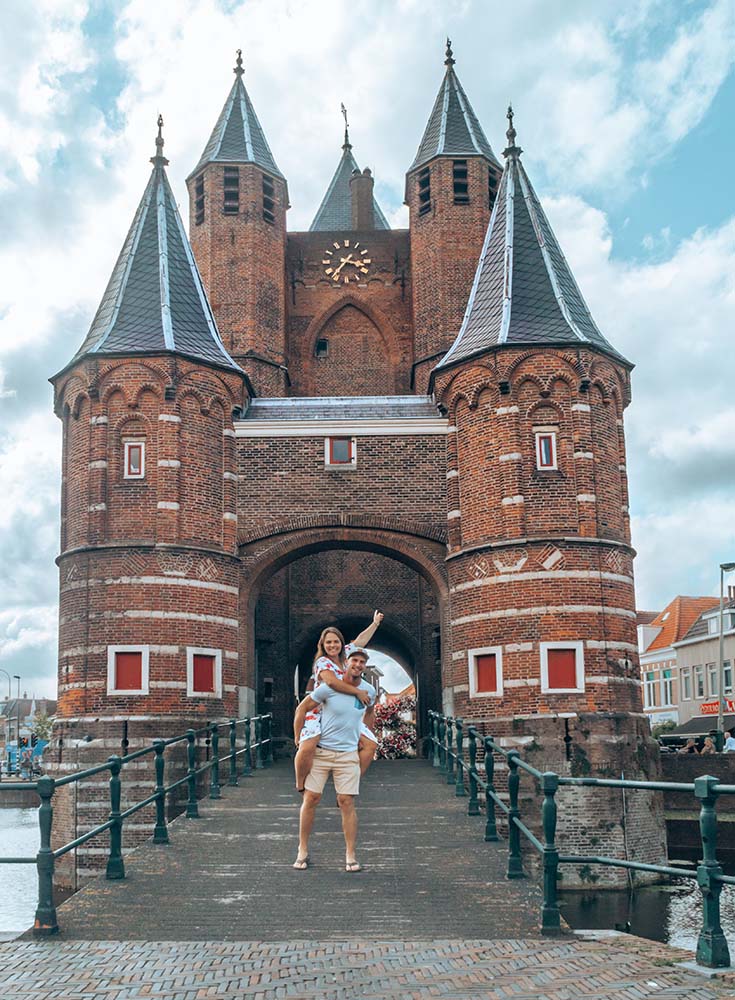
Haarlem
Let’s start close to Amsterdam. A 15-minute train ride from Amsterdam Central Station gets you to the nearby city of Haarlem.
This super charming historical city is the center of the Dutch flower-bulb-growing district, but it is the magnificent architecture and monumental buildings that truly steal the show.
The best way to explore Haarlem is on foot. Simply start walking through the old city center, stroll past the canals, peak into the leafy courtyards called “hofjes” and get lost in a maze of narrow cobblestone streets lined with cute gingerbread houses.
Landmarks to look out for are Windmill De Adriaan on the bank of the river Spaarne that runs through town, the Amsterdamse Poort; Haarlem’s only remaining old city gate, the massive Gothic-style Saint Bavo Church on the main city square, and the Byzantine-style Saint Bavo Cathedral (both are pictured above).
When you need a break, head to the Jopenkerk; a beer brewery inside a 14th-century church. If you’re into craft beer, tasting some of their beers is a must!
For food, go to Roast Chicken Bar. They only serve grilled chicken, but it might just be the best chicken you’ll ever have.
![]()
The Beach
In summer thousands of people flock to the coast for a day on the beach. The Dutch beaches are wide, sandy, and clean, and with over 500 kilometers of coastline beaches, there are plenty to choose from.
If you don’t mind busy beaches, then head to Scheveningen (try pronouncing that!) with its famous pier with the Ferris wheel and bungee jump, or go to Bloemendaal aan Zee, which is right next to Haarlem and well known for its beach clubs and party scene.
If you prefer less crowded beaches, then opt for Noordwijk, which is also great for watersports, especially for kitesurfing.
For the least crowded beaches, go to the country’s most south-western province Zeeland. It is a bit of a drive from Amsterdam, but the beaches here are by far the most beautiful in the country.
![]()
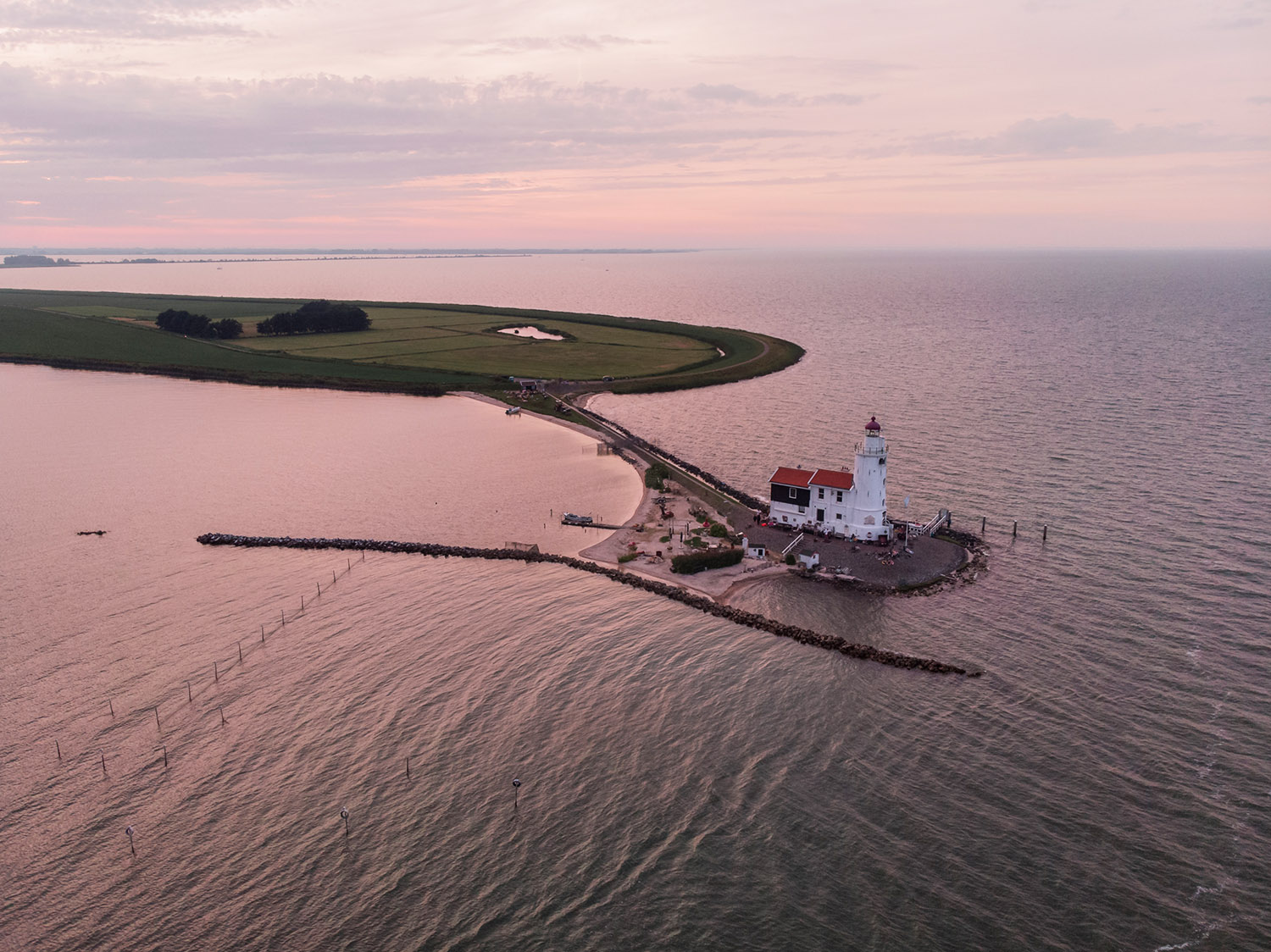
Het Paard van Marken (Marken Lighthouse)
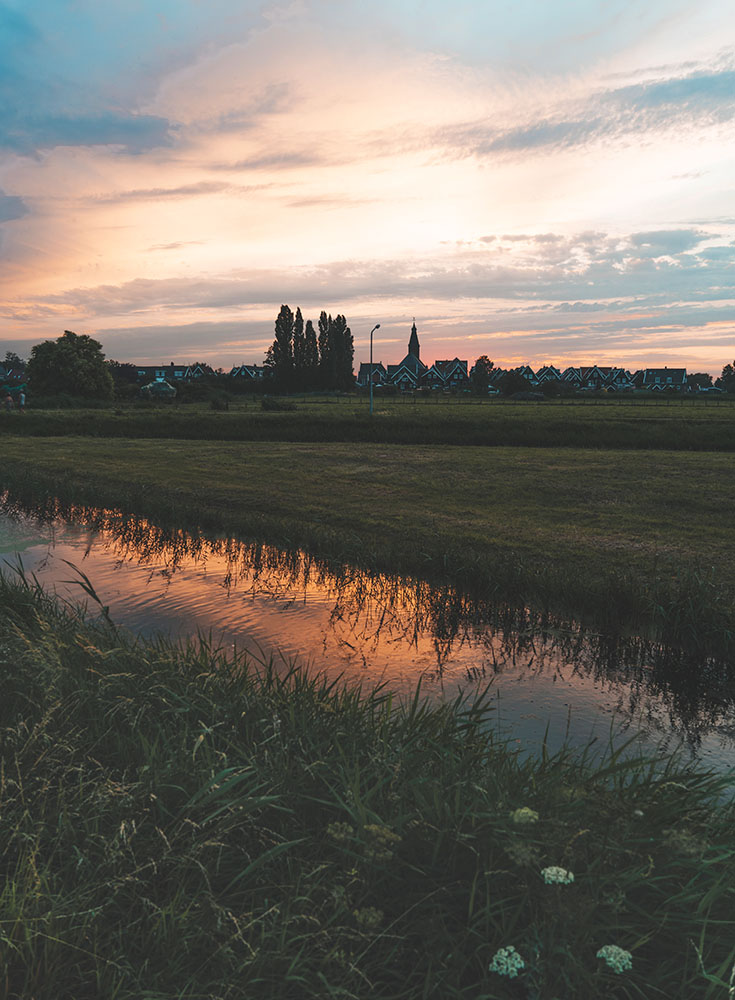
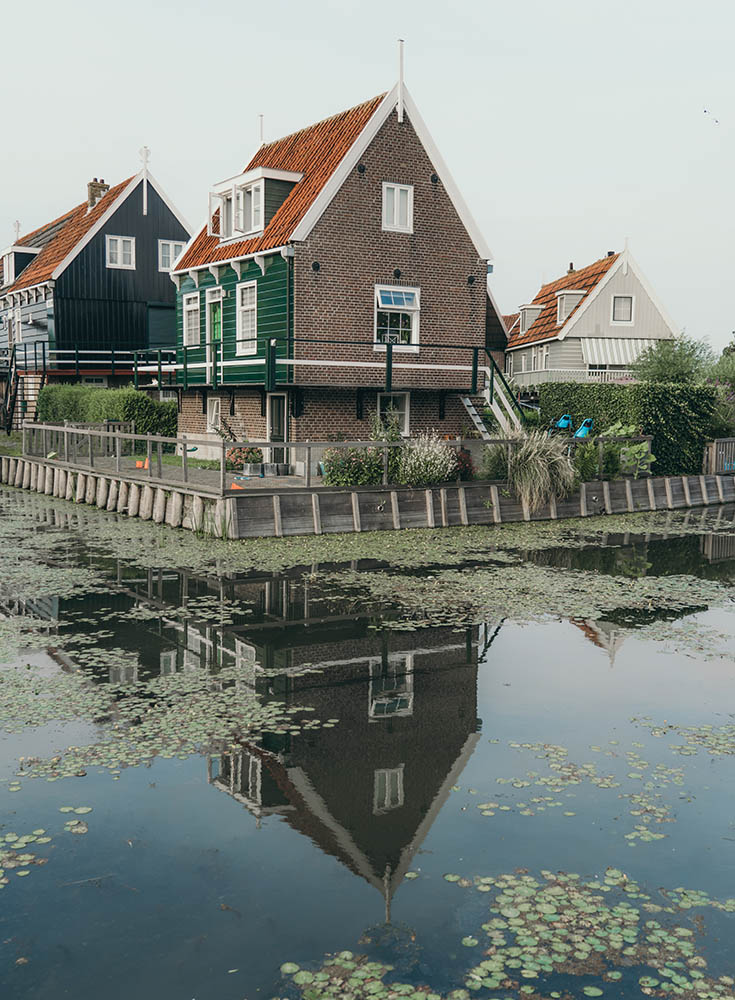
Marken
If you look closely at the map of The Netherlands, you’ll see two big lakes in the middle of the country; IJsselmeer and Markermeer. If you then look even closer at the Markermeer, you’ll find a tiny triangle-shaped bit of land in the lake, with one road leading to and from it.
This bit of land is called Marken, and visiting it is like going back in time a few hundred years.
Marken used to be located on the tip of a peninsula as part of the mainland, but in the 13th century, a very heavy storm swept away the middle chunk of this peninsula, separating Marken from the mainland and making it an island.
It wasn’t until 1957 that Marken was connected to the mainland again when the embankment with the one road leading to and from it was built.
Because Marken used to get flooded often, the inhabitants built their houses on earth mounds and later on stakes, and dug narrow channels to be able to funnel away the excess water.
This gave Marken its own authentic character and building style that you can’t see anywhere else in the world.
Marken is very small and the whole island can be explored on foot in only a few hours. When you walk around Marken, check out the Wooden Shoe Factory where they make traditional Dutch clogs.
Also, make sure to pay Het Paard van Marken (The Horse of Marken) a visit. This isn’t a horse like its name suggests, but an incredibly picturesque lighthouse on the easternmost tip of the land.
Helpful Tip:
![]()
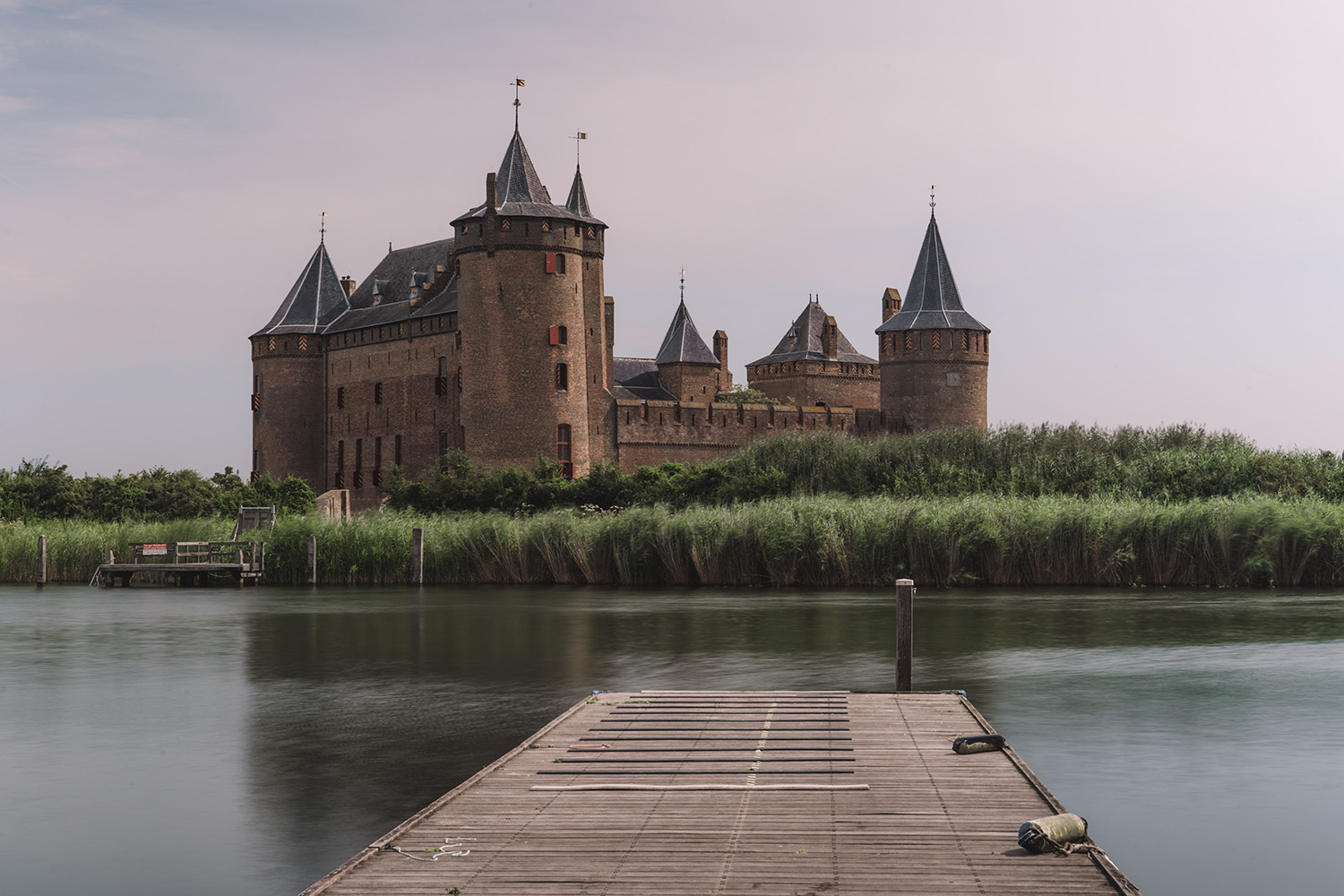
Muiderslot
Just east of Amsterdam lies the small fortified city of Muiden. Muiden was built to guard the mouth of the river Vecht, an important river used for trade going inland. Entrance to the river was guarded by a sea lock, and the city’s most popular attraction today; Muiderslot (Muiden Castle).
This 13th-century castle is a textbook example of how a kid would draw a castle: A moat with a bridge leading over the water to the gatehouse, thick high walls, and round towers on the corners.
Nowadays it is a museum that tells you the history of the castle and shows you how life in the castle was through the centuries.
Find out what the royalty that lived in the castle used to wear and eat, and learn how the knights polished their armor and sharpened their swords. A ticket to enter the castle grounds and to go into the castle is €15,50 and needs to be purchased in advance and online.
Helpful Tip:
![]()
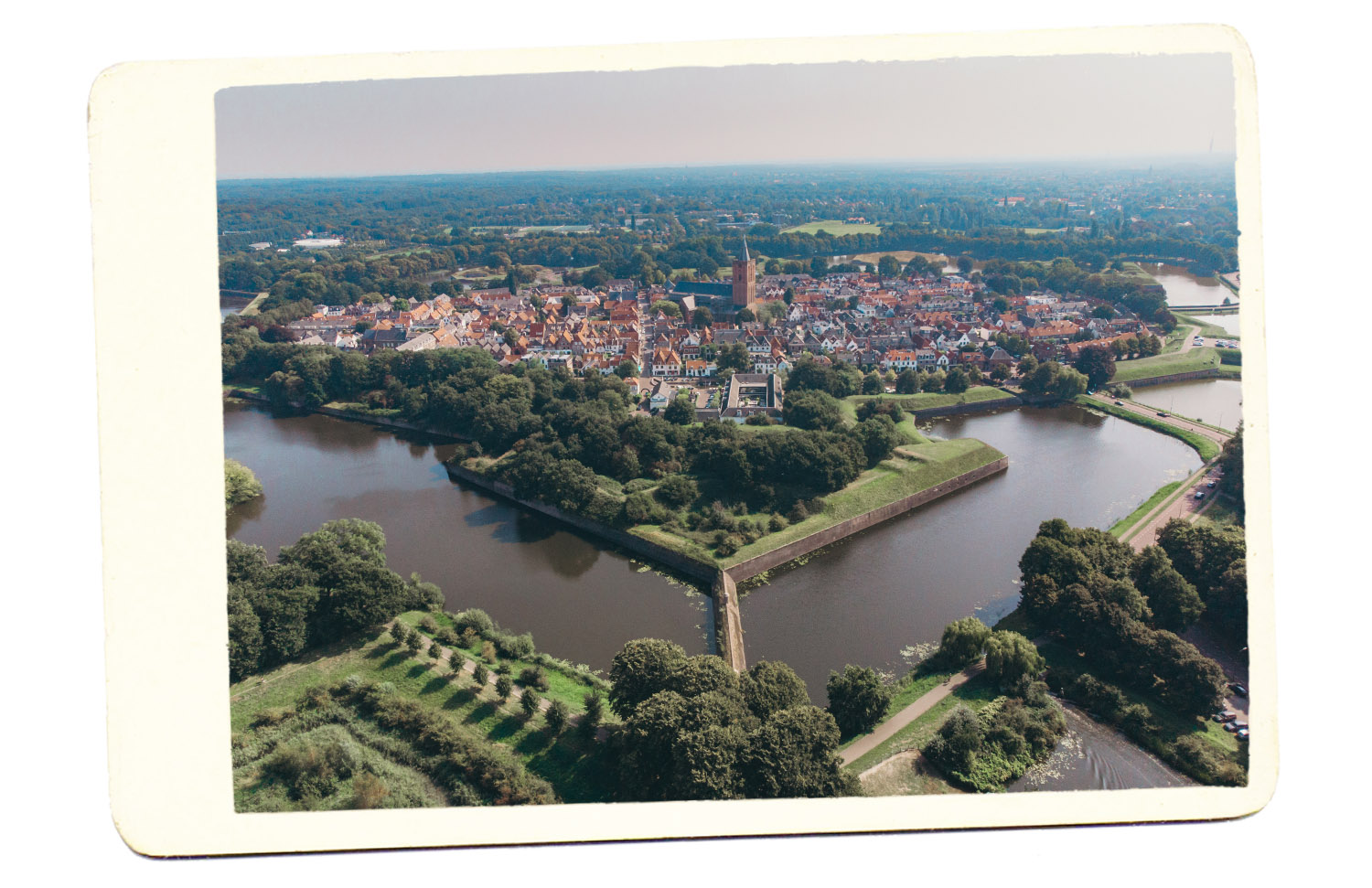
Naarden
Naarden is another old fortified city that is worth a visit. It is one of the best-preserved fortified towns in Europe, and it is famous for its unique star shape and surrounding moat that is clearly visible from the sky.
Just like Muiden, Naarden was built to defend the Dutch waterways, and its center is full of historical buildings.
Since Naarden is very small, the town itself doesn’t offer much to do. But you can easily spend an afternoon exploring the town and walking over the defensive city walls.
![]()
Rotterdam
After Amsterdam, Rotterdam is the biggest city in The Netherlands.
It is home to Europe’s largest seaport and has the reputation of being a tough port city, but once you look a little bit further, you’ll see that it is a beautiful city that has a lot to offer, especially if you’re a foodie and if you’re into architecture.
What makes Rotterdam unique is its funky modern architecture. Take the yellow-colored cube houses for example. These are cube-shaped houses that are mounted on concrete pillars, but the cubes are tilted 45 degrees, so all the outside walls are at an angle.
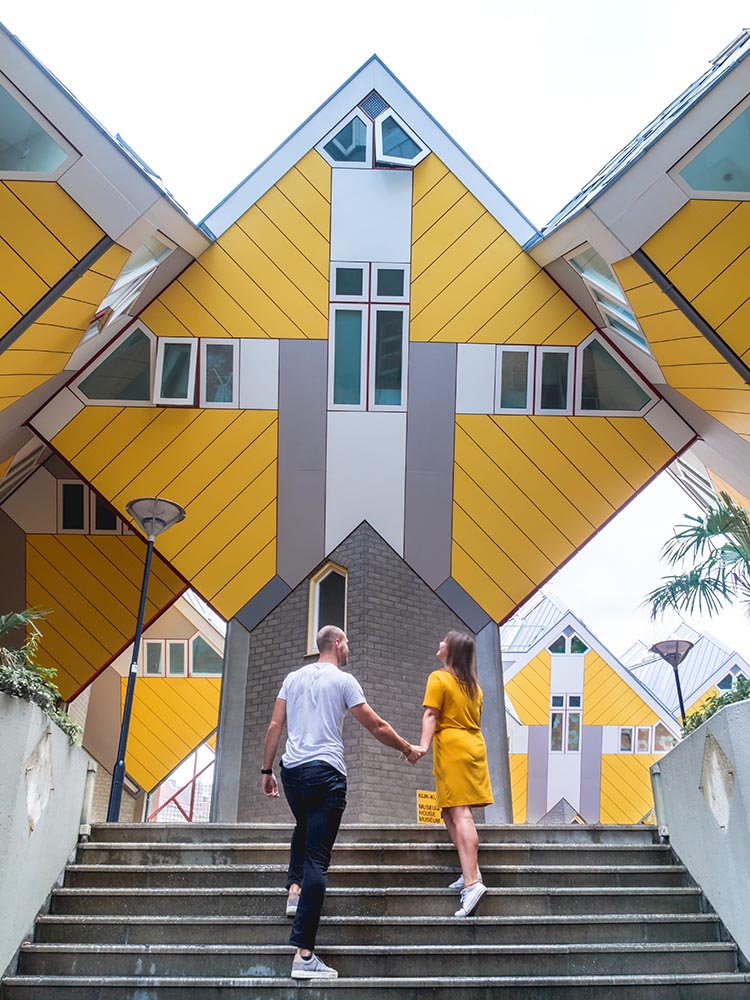
You might think that this is insanely impractical, but people actually live in these houses and they’re surprisingly stylish on the inside. Across from the cube houses, you’ll find the Markthal, a massive indoor food court, with every type of food stall you can possibly imagine.
If you enjoy art, then definitely check out the Kunsthal Rotterdam. This striking glass and steel building hosts many art exhibitions with temporary art, design, and photography. From the Kunsthal, take a walk and cross the beautiful Erasmus Bridge that spans the Maas River, and end up in between the city’s highrise.
This part of town is full of bars and restaurants, and it is where the locals hang out after work. Here the Foodhallen Rotterdam is a great place to grab a bite. Again a food court, but this time offering local Rotterdam street food.
Most of the spots mentioned are close to the river, so a quick and fun way to get from place to place is by water taxi. There are 50 stops throughout the city, and besides it being one of the quickest ways to get around, you also get to see more of the city from the water.
Looking for something more exciting? Then go to the Euromast, a 185-meter high observation tower and the highest building in the country. Take the lift up to the top, or have dinner in the restaurant located on the viewing deck at 100 meters high, or abseil down from the top of the viewing deck.
If you feel like splurging a bit, you can even sleep in the Euromast. Imagine waking up with a view like that!
![]()

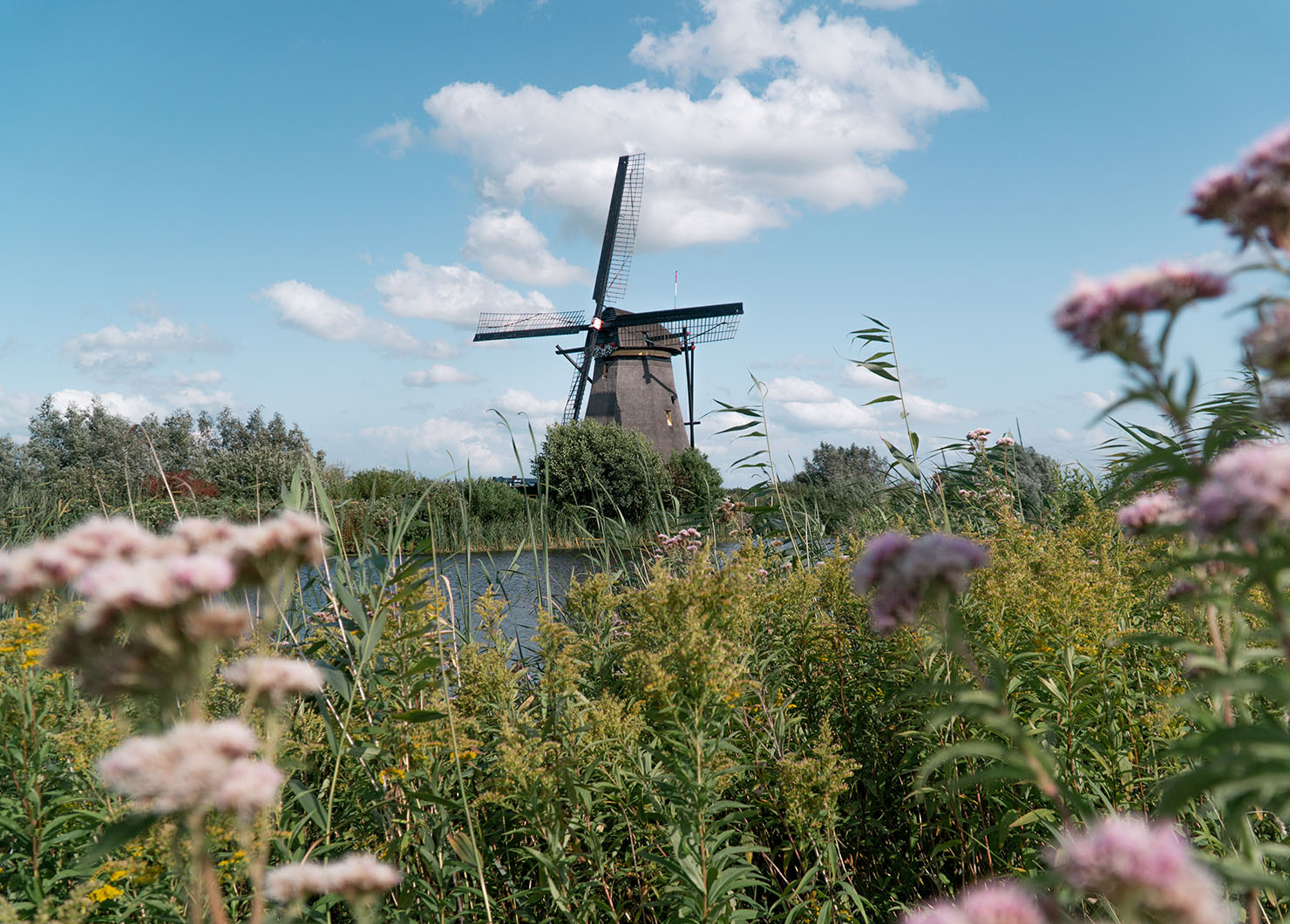
Kinderdijk
I know we said that the windmills at the Zaanse Schans are overly touristy, but that doesn’t mean that you shouldn’t go to see any windmills at all.
Close to Rotterdam lies the quaint village of Kinderdijk, and it is home to 19 monumental windmills that were built to pump water in and out of the irrigation channels that water the fields.
During the day, this place is crawling with tourists, but at the end of the afternoon, all the tourist groups leave and there is hardly anyone there. So have your dinner, and then head to Kinderdijk for sunset, which in all honesty is when this scenery is most stunning anyway.
![]()
Utrecht
Utrecht is one of the most lively cities in The Netherlands. After Amsterdam, it is the biggest student city in the country, and the city is a lot like Amsterdam, but without the tourist crowds.
In the middle of the city stands the Dom tower, which can be seen from any point in the city, but even more iconic are the canals with their wharf cellars that house cafés and terraces by the water.
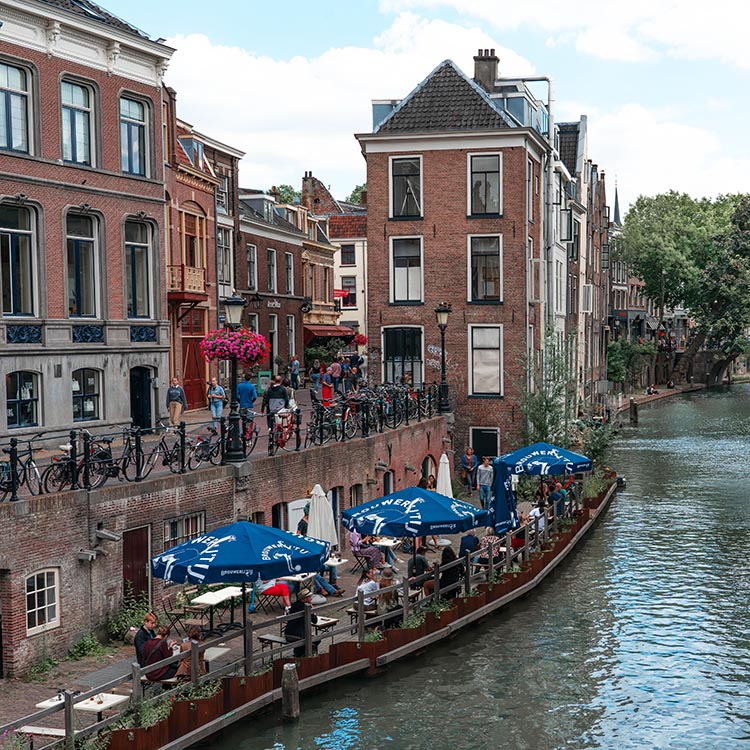
Or check out Café Olivier, a cool craft beer bar inside an old church, with the church organ, the chandeliers, and the stained glass windows left intact.
There is always something happening in Utrecht. In summer there are cultural events and music festivals basically every weekend, and on any Friday or Saturday afternoon, you’ll find the whole city center buzzing with people in bars and on terraces.
![]()

Amersfoort
Only 35 minutes by train from Amsterdam, a small but charming city called Amersfoort lies close to the exact middle of the country, and it is one of the best-preserved medieval cities in the country.
This is easily noticeable by all the impressive buildings scattered throughout town, like the big water and land gate called the Koppelpoort, or the 98-meter high church tower nicknamed the “Long John” that rises up above the city.
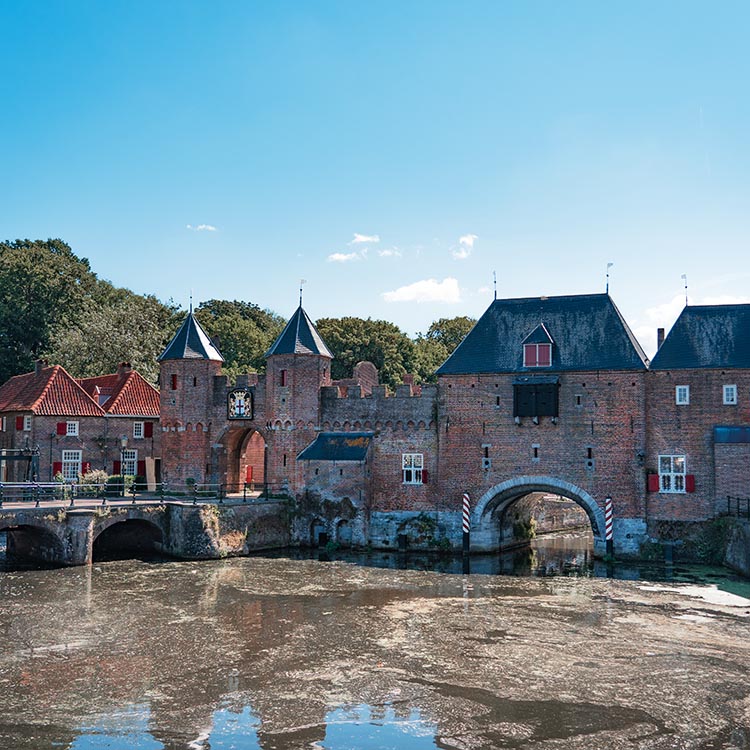
Like most Dutch medieval cities, Amersfoort has a network of canals, but Amersfoort also has a moat going around the old city center.
On the inside of this moat lie the old city walls, but instead of normal walls, these walls are houses, and people actually live in them.
They are called ‘Muurhuizen’, which literally translates into wall houses.
Amersfoort is also known for its many squares full of bars and terraces, great coffee and local craft beer, and a lively market a couple of times a week on the city’s main square “De Hof” with delicious local products.
Amersfoort has been voted as the best city in the Netherlands to live in multiple times, and after a visit to this beautiful little gem, you’ll surely understand why.
![]()
Dutch Open Air Museum – Arnhem
In the east of the Netherlands, near the German border, lies the city of Arnhem. This city has a rich history and is definitely worth a visit if you’re interested in WW2 history, or in fashion.
This sounds like a weird combo, but the two are completely unrelated. Arnhem played a big part in WW2 and a lot of that still shows, and Arnhem is where the Dutch fashion academy is located, and with loads of boutique fashion stores in town, it makes for a great place to go shopping.
Something else that is worth a visit in Arnhem, and something that is suitable for everyone, is the Dutch Open Air Museum. This 44-hectare museum showcases how people from different areas in the Netherlands lived through the ages.
Like what Amsterdam looked like in the 17th and in the 19th century, how farmers made a living in the past centuries, and how life was in other iconic Dutch towns like Marken.
There is a heritage tram line going through the park to take you from section to section, there is a massive windmill that you can enter, and the park even has its own craft beer brewery.
![]()
If you are venturing to The Netherlands and want to explore Amsterdam, too, make sure to check out these guides:
See details


0 nhận xét:
Đăng nhận xét